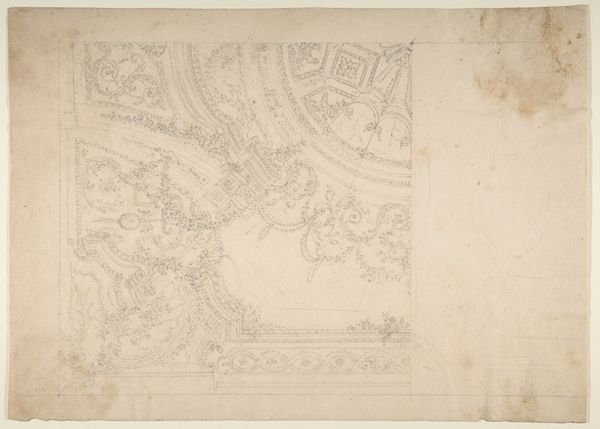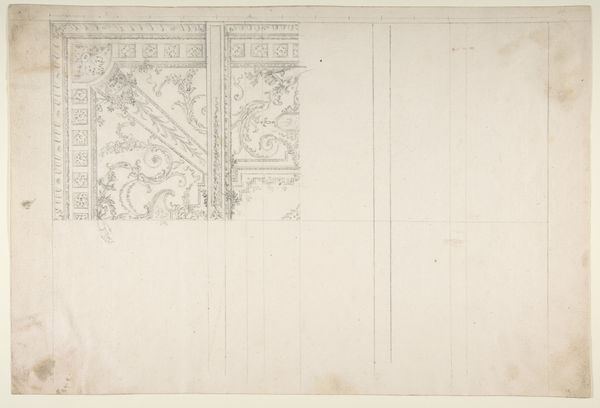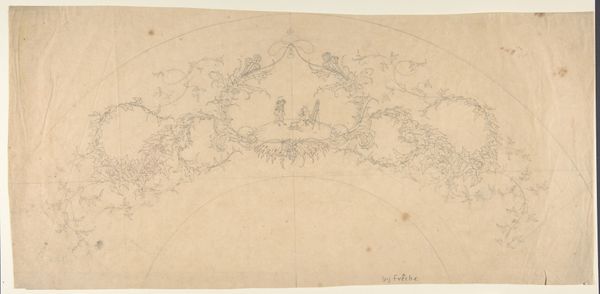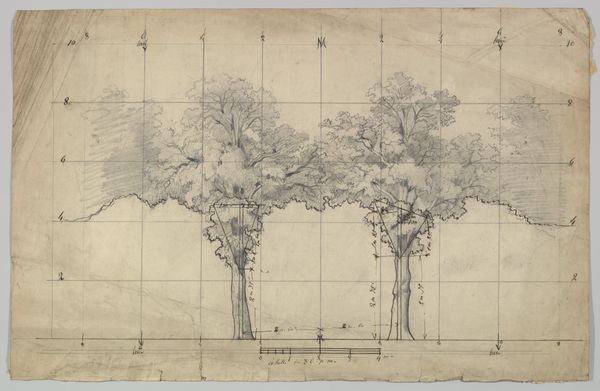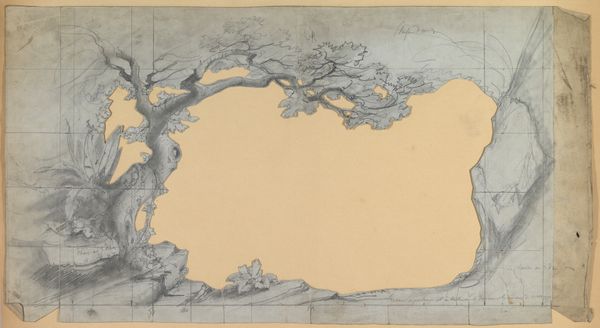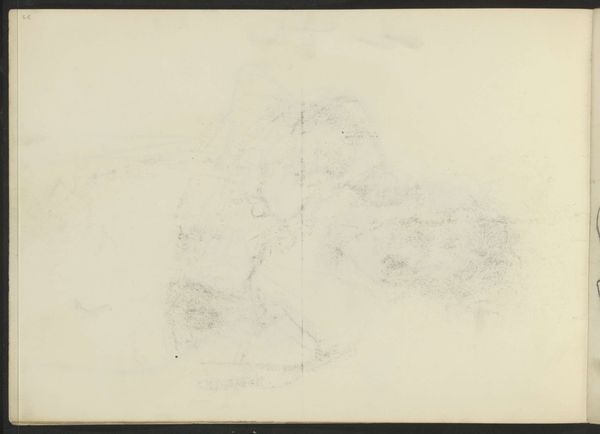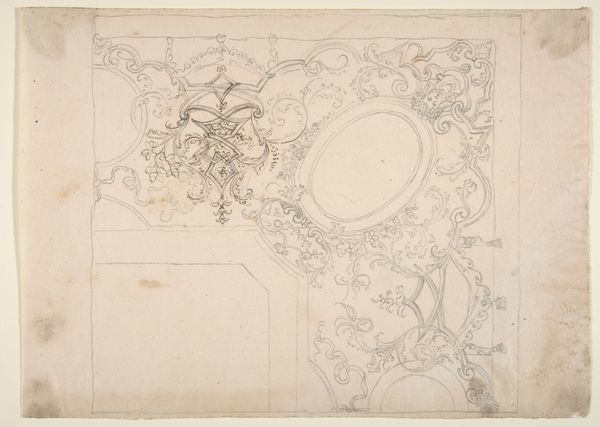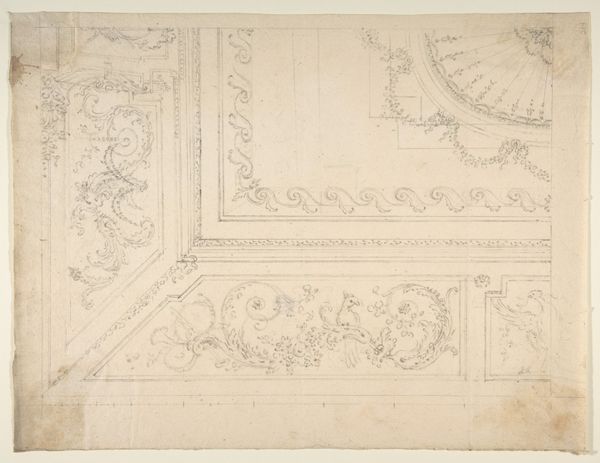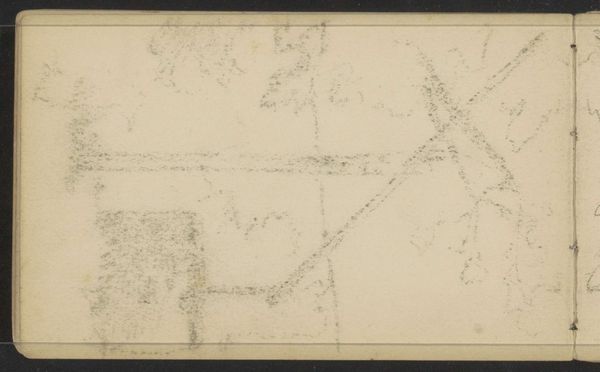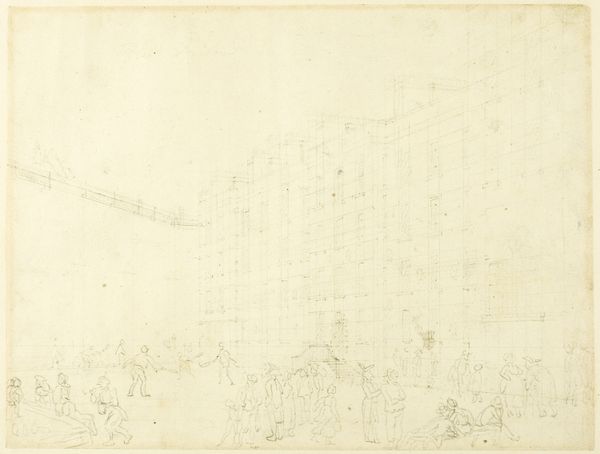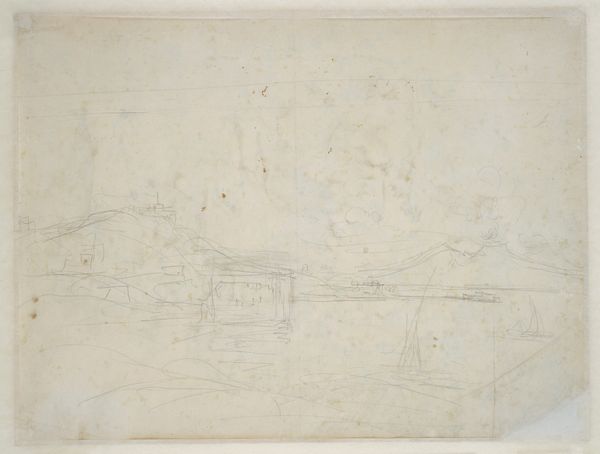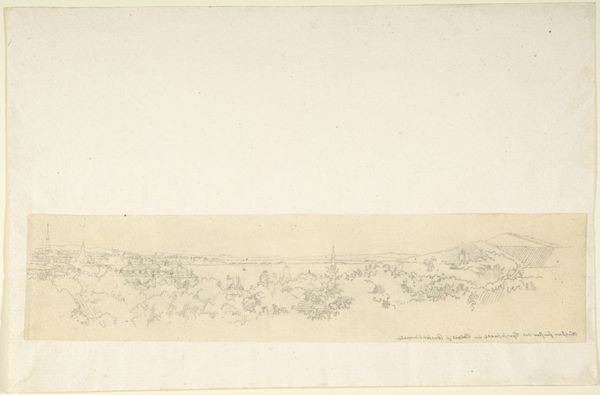
drawing, paper, pencil, architecture
#
drawing
#
neoclacissism
#
baroque
#
classical-realism
#
paper
#
geometric
#
pencil
#
architecture
Dimensions: 10 5/16 x 15 3/4 in. (26.2 x 40 cm)
Copyright: Public Domain
Curator: Here we have Leonardo Marini’s "Design for Ceiling," created sometime between 1700 and 1800. This pencil drawing on paper resides at the Metropolitan Museum of Art. Editor: It’s remarkably skeletal, isn’t it? Almost architectural in its sparseness despite the decorative flourishes. Curator: Exactly. What we see here is an articulation of the aesthetic and social aspirations tied to neoclassical and Baroque sensibilities. Consider how ceiling designs during this era served not only to decorate space, but also to project an aura of authority and divine mandate. The building itself becomes a physical representation of hierarchical structures. Editor: The left side certainly suggests a strong sense of intentional order, even if the rest seems unfinished. I am intrigued by the contrast between the elaborately decorated section and the vast blankness that comprises the majority of the drawing; this asymmetry really throws the composition off balance, demanding that your eye fixates on the contrast. Curator: And that imbalance could reveal insights into artistic training during the time. The contrast also highlights how power, wealth, and patronage determined artistic priorities. This design encapsulates Baroque extravagance with Neoclassical rationality; both, ways of representing the powerful through controlled visual spectacle. Editor: Indeed. One observes the clear intention of order – lines, curves, and angles – within a very constrained area, only to be abruptly faced with undifferentiated space. You can clearly see the intersection of artistic planning and representational intent. It feels unfinished, an indication of a world shifting gears. Curator: Reflecting the shifts of that period, this drawing not only illustrates the intended physical features but also echoes historical and social trajectories of that era. Editor: Looking at the interplay of detailed versus absent forms, one gets a better grasp on how the principles of representation underscore both intent and potential.
Comments
No comments
Be the first to comment and join the conversation on the ultimate creative platform.
